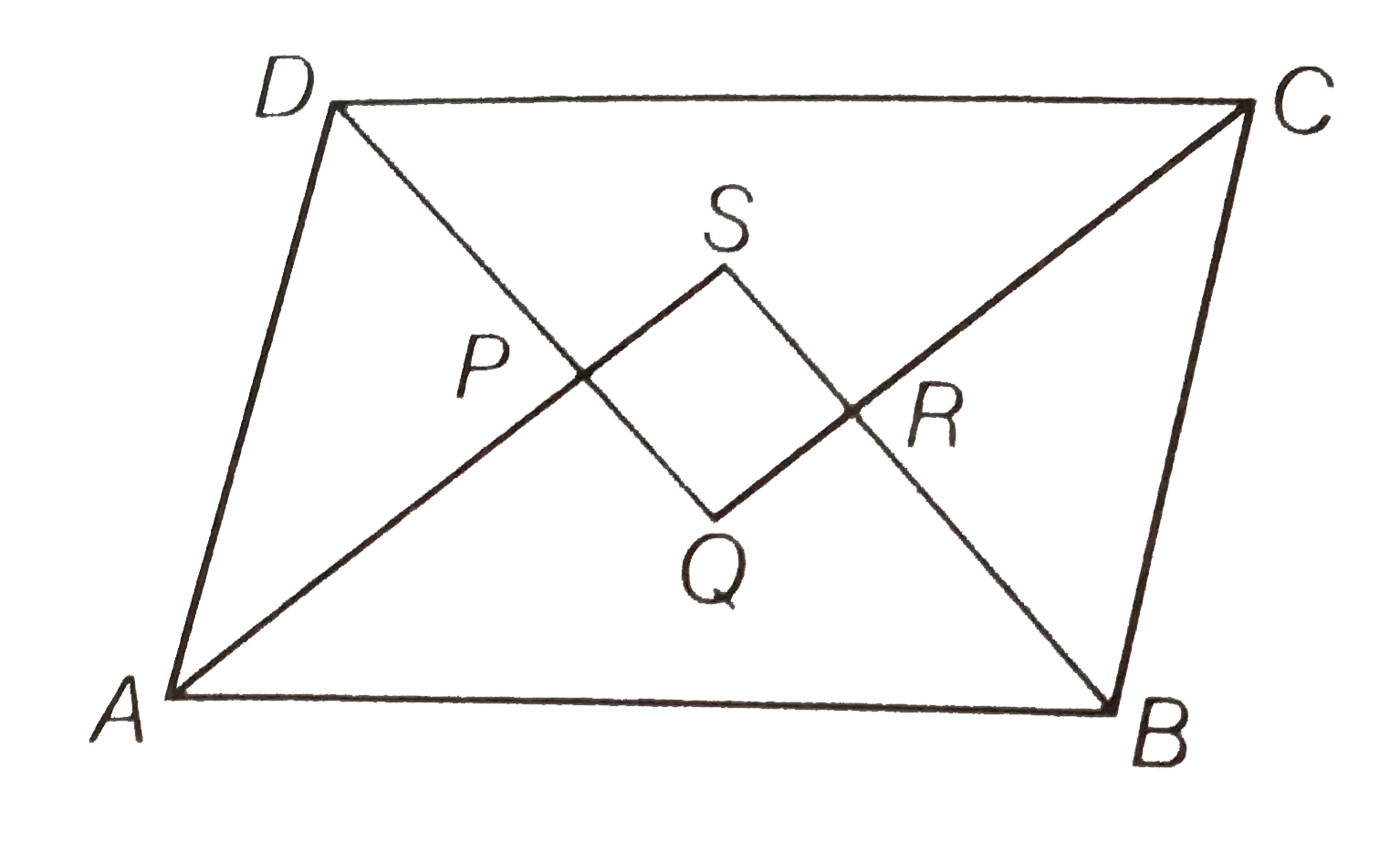Two parallel lines l and m are intersected by a transversal p . Show that the quadrilateral formed by the bisectors of interior angles is a rectangle.
To show that the quadrilateral formed by the bisectors of the interior angles of two parallel lines intersected by a transversal is a rectangle, we can follow these steps:
1. Identify the Angles:
Let lines l and m be parallel, and let transversal p intersect them at points A and C. The angles formed at these intersections are:
- Angle PAB (interior angle at line l)
- Angle QAC (interior angle at line m)
- Angle RCD (interior angle at line m)
- Angle SCA (interior angle at line l)
2. Use Alternate Interior Angles:
Since l is parallel to m and p is a transversal, we know that:
∠PAB=∠RCD(alternate interior angles)
Therefore, the bisectors of these angles will also be equal:
12∠PAB=12∠RCD
3. Establish Equal Angles:
Let ∠BAC be the bisector of ∠PAB and ∠DAC be the bisector of ∠RCD. From the previous step, we have:
∠BAC=∠DAC
4. Show Parallelism:
Now consider the lines formed by the angle bisectors:
- Line AB (formed by bisector ∠PAB)
- Line CD (formed by bisector ∠RCD)
Since ∠BAC=∠DAC, by the Alternate Interior Angles Theorem, we can conclude that:
AB∥CD
5. Repeat for the Other Pair of Sides:
Similarly, consider the angles QAC and SCA. By the same reasoning:
∠QAC=∠SCA(alternate interior angles)
Therefore, the bisectors ∠BCA and ∠DCA will also be equal:
∠BCA=∠DCA
This leads to:
BC∥AD
6. Conclude it is a Parallelogram:
Since both pairs of opposite sides are parallel:
AB∥CDandBC∥AD
We can conclude that quadrilateral ABCD is a parallelogram.
7. Prove it is a Rectangle:
To show that ABCD is a rectangle, we need to prove that one of its angles is 90∘.
The angles PAB and QAC are supplementary:
∠PAB+∠QAC=180∘
Dividing this equation by 2 gives:
12∠PAB+12∠QAC=90∘
Thus, we have:
∠BAC+∠DAC=90∘
Therefore, angle BCA is 90∘.
8. Final Conclusion:
Since ABCD is a parallelogram with one angle equal to 90∘, it follows that ABCD is a rectangle.
Let lines l and m be parallel, and let transversal p intersect them at points A and C. The angles formed at these intersections are:
- Angle PAB (interior angle at line l)
- Angle QAC (interior angle at line m)
- Angle RCD (interior angle at line m)
- Angle SCA (interior angle at line l)
Since l is parallel to m and p is a transversal, we know that:
∠PAB=∠RCD(alternate interior angles)
Therefore, the bisectors of these angles will also be equal:
12∠PAB=12∠RCD
Let ∠BAC be the bisector of ∠PAB and ∠DAC be the bisector of ∠RCD. From the previous step, we have:
∠BAC=∠DAC
Now consider the lines formed by the angle bisectors:
- Line AB (formed by bisector ∠PAB)
- Line CD (formed by bisector ∠RCD)
Since ∠BAC=∠DAC, by the Alternate Interior Angles Theorem, we can conclude that:
AB∥CD
Similarly, consider the angles QAC and SCA. By the same reasoning:
∠QAC=∠SCA(alternate interior angles)
Therefore, the bisectors ∠BCA and ∠DCA will also be equal:
∠BCA=∠DCA
This leads to:
BC∥AD
Since both pairs of opposite sides are parallel:
AB∥CDandBC∥AD
We can conclude that quadrilateral ABCD is a parallelogram.
To show that ABCD is a rectangle, we need to prove that one of its angles is 90∘.
The angles PAB and QAC are supplementary:
∠PAB+∠QAC=180∘
Dividing this equation by 2 gives:
12∠PAB+12∠QAC=90∘
Thus, we have:
∠BAC+∠DAC=90∘
Therefore, angle BCA is 90∘.
Since ABCD is a parallelogram with one angle equal to 90∘, it follows that ABCD is a rectangle.
Topper's Solved these Questions
Similar Questions
Prove that the quadrilateral formed by the bisectors of the angles of a parallelogram is a rectangle.

View SolutionProve that the quadrilateral formed by the bisectors of the angles of a parallelogram is a rectangle.

View SolutionIf two parallel lines intersected by a transversal; prove that the bisectors of the two pairs of interior angle encloses a rectangle.
View SolutionProve that the bisectors of the interior angles of a rectangle form a square.
View SolutionThe quadrilateral formed by angle bisectors of a cyclic quadrilateral is also cyclic.
View SolutionIf two parallel lines are intersected by a transversal, prove that the bisectors of the interior angles on the same side of transversal intersect each other at right angles.
View SolutionThe diagonals of a quadrilateral ABCD are perpendicular. Show that the quadrilateral, formed by joining the mid-points of its sides, is a rectangle.
View SolutionThe diagonals of a quadrilateral ABCD are perpendicular. Show that the quadrilateral, formed by joining the mid-points of its sides, is a rectangle.
View SolutionAB and CD are two parallel lines and a transversal 'l' intersects these lines at X and Y respectively Prove that the bisectors of interior angles from a parallelogram whose each angle is 90∘.
View SolutionThe angle bisectors of a parallelogram form a rectangle.
View Solution
